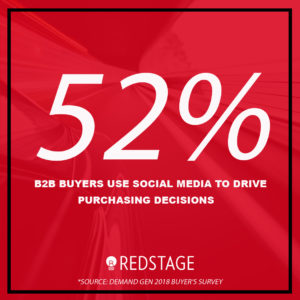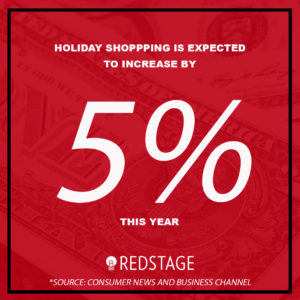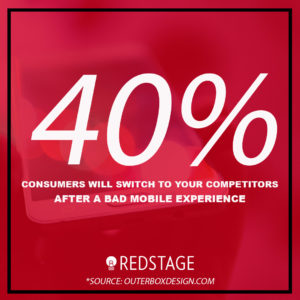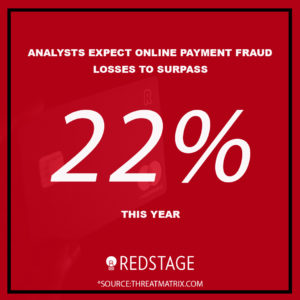
Is Your Website ADA Compliant?
Most Amazon Prime members make an online purchase once per week, and plaintiff lawyers are delivering ADA-compliance lawsuits even faster. The Supreme Court is showing no remorse for companies whose websites are not ADA-compliant. If you get served, your only option is to pay up. Here are 6 steps some of our clients have taken to successfully operate an ADA-compliant website and avoid costly damages.
Disclaimer: The information provided in this blog does not and is not intended to constitute legal advice. All content and information available are for informational purposes only.
Step 1: Understand the Seriousness of ADA-Compliance

The American Disabilities Act requires all places of public accommodation to be accessible to individuals with disabilities. It’s no surprise that in the year 2019, the world wide web is now considered a place of public accommodation (See: Title III).
In 2016, Domino’s Pizza Inc. was hit with an ADA- compliance lawsuit that claimed the website doesn’t ensure the blind and visually impaired can order food through the website or mobile app. As of October 7, 2019, the Supreme Court is refusing to review Domino’s appeal on the basis that ADA is a strict liability law, meaning there are no excuses for non-compliance violations.
Plaintiff lawyers are working overtime to serve up lawsuits for non-compliant companies. No matter how many unique visitors your website attracts, if it’s inaccessible for web users with mental or physical disabilities, your business is a target for legal action
Reports reveal that there is one web-related ADA lawsuit every working hour. This means 8 a day, 40 a week, and more than 2,000 a year. In 2018, more than 7,500 ADA suits were arraigned in federal court. Now that you understand it’s not a question of if, but when you’ll be targeted, let’s dive into the Web Content Accessibility Guidelines.
“While plaintiff lawyers handing out ADA-compliant lawsuits may seem predatory it is necessary and an important part of our justice system. Our government alone would not have the resources to enforce important regulations. So, these lawsuits are here to stay. Companies must know that there are consequences for non-compliance. As a business stakeholder, we have the challenge of balancing compliance, cost, and customer experience.
— Adam Morris, CEO, Redstage.
Step 2: Review Web Content Accessibility Guidelines

6.2 billion shoppers are expected to shop online this Cyber week alone, leaving eCommerce businesses vulnerable to potential lawsuits. To help you prepare, the Web Content Accessibility Guidelines (WCAG) explains how users with disabilities can access sites. While you’re in the process of strategically planning your holiday content, be sure to double-check all points of access to your store. You need to ensure your site is “perceivable, operable, understandable, and robust.” For a full explanation of these terms, see the link to WCAG above.
Taking proper measures to get an ADA-compliant website will save companies time and money. This step is always forgotten, overlooked, and never budgeted for. Many helpful tools can let you know if your site passes ADA requirements and extensions that come with approved codes.
— Jignesh Joshi, Sr. Project Manager, Redstage
Step 3: Add Alternative Means of Access

Ensuring your content is ‘perceivable’ may not be the toughest task you’ll face on your ADA-compliance journey. In fact, it may even be the opposite. According to the WCAG, all images including charts and infographics must include alt-text. Since SEO and content marketing are already part of your eCommerce strategy, you’ve likely already added alt-text to all of your imagery. To make sure, take some time to go through your archive and add relevant alt-text wherever it’s missing. This process may be tedious, but site readers (software) must be able to successfully read and describe your images to the blind and visually impaired.
54% of consumers want to see more video content from a brand or business they support. Naturally, videos have become a common practice for brands. All published video and audio files must also be accessible to those with disabilities. This can be achieved by including closed captions and text transcripts.
Closed captions should be accurate and in sync with video while text transcripts should accurately convey what’s in the video file. If you’re producing audio content like podcasts, you may want to pay close attention.
The WCAG updates are continuous and it can be easy to overlook minor details like fonts, for example. Make sure your fonts are clearly readable and properly displayed on a high contrast background. To play it safe, keep the standard light background and dark font. These minor changes can be a huge help for your users to easily navigate your site.
Step 4: Provide Easy Navigation for your Users

Luckily for our readers, we’ve been sharing tips on how to provide a fast and frictionless user experience for customers all year. If you’ve been following along, you should already be one step ahead, since user operation for ADA-compliance and frictionless experiences go hand-in-hand. When focusing on navigation, the first step is to ensure your website’s entire navigation can be fully operated via keyboard, without a mouse or touchscreen.
Users should have the ability to pause, slow down automatic movements, interact with images, and play videos through the keyboard. One tip is to stay away from auto-play to give your visitors enough time to read and process content.
Secondly, if your website doesn’t have a search function that can help your customers find products and information at ease, it’s required under the Web Accessibility Standards to have one.
Lastly, do not forget to include a site map. Remember, a positive user experience requires users to have the ability to operate your website that is understandable and feels natural. Again, you probably have one already because site maps improve your SEO.
Step 5: Website Features Should Be Understandable

When producing content, remember: all of your visitors must be able to read and understand it. Providing a default language function can not only keep you out of a lawsuit, but it can positively affect your conversion rate. We all know the uncomfortable feeling of standing in the middle of a conversation without understanding what is being discussed. To ensure your users and their reading assistance technology can properly function, refrain from the use of jargon, idioms, and abbreviations without properly introducing or explaining them.
Your website may already have the main functions that are considered predictable under the WCAG. Your users should be able to come to your website and predict what will happen as they interact. If you’re unsure, we have provided a brief checklist below.
- An X in the upper left- or right-hand corner for users to close the window.
- All Visible forms have instructions
- Navigation is consistent across all pages (Up, down, left, right,)
It may seem like a lot to fine-tune your website. Make sure you keep your developers in the loop as they’re coding and responsible for making sure your website is running smoothly. It takes a lot of work to get fully compliant. Once you’ve achieved compliance, you’ll want to keep it that way.
Step 6: Website Should Be Error-Free

While developers have a lot on their to-do list, the main priority is to make sure your website is robust enough to be considered ADA-compliant. This step may take the most time, but it can save you more than $50,000. Without getting into too much coding jargon, the overall presentation must be error-free and coded with standard HTML tags. We touched on some of these points earlier in the article, so here’s a quick checklist to review with your developers.
- Clear Descriptive Text
- Nested Headings
- Clear Forms
- Uniform Labels
- Section Labels
- Clean Code
Keep in mind that the work you do to make your site accessible benefits ALL users, not just those who may have disabilities. You will see the positive results of providing an accessible, easy-to-use site almost immediately.
—Kevin Rydberg, Managing Accessibility Consultant, Siteimprove
Final Thoughts
Remember, reaching ADA-compliance is a process with many steps to complete. With an estimated 30% increase in lawsuits this year, there’s no time to waste. Remember, the information provided in this blog does not and is not intended to constitute legal advice. Our trusted partners at Siteimprove can help you pinpoint accessibility issues that can potentially put your site at risk of an ADA-compliance lawsuit. Consider them your first step to protection before lawyering up. They can get you involved in a program that will help shield you from those who would target your online store. Do not hesitate to get a powerful, free website report and request a Demo here.
If you’re looking for a more robust, comprehensive solution to cover all holiday risks (including security, bug monitoring, and ADA-compliance, check out Redstage’s new security and maintenance bundle here. Feel free to drop us a line if you have any questions! We’re always happy to help.







Recent Comments